9 reasons why you should create a blog for your eCommerce store

When you’re running an eCommerce store, looking after a blog can seem like a lot of hard work- there are keywords to research, articles to write, and images to source.
However, writing well-researched, informative, SEO-optimised articles on a regular basis can lead to improved brand awareness, more sales, and higher rankings in the search engine results.
Here are nine reasons why blogging can benefit your online store, alongside some of our favourite eCommerce blogs.
Article topics
- You can get the edge over your competitors
- You can rank for additional keywords
- You can answer customer’s questions
- You can show off your expertise
- You can generate backlinks
- You can sell your products
- You can keep visitors on your site for longer
- You can tell customers more about you
- You can drive conversions
- Need a little extra help with your blogging?
1. You can get the edge over your competitors
9% of B2B businesses and 15% of B2C businesses don’t blog. This means that if your competitors don’t have a blog, you can get a significant advantage in your marketplace.
While your competitors might have a blog, they might do a bad job of maintaining it. They may not blog frequently enough or write content customers aren’t interested in reading. You can use this to your advantage by creating content that provides more value.
Before you start your blog, do some competitor research. Look at what your rivals blog about, how often they blog, and where their articles rank in the search engines.
2. You can rank for additional keywords
One of the main advantages of blogging is that you can rank in the search engines for more keywords than you can with your product pages, landing pages, and service pages.
This means you can appear in Google for additional words and phrases related to your business. The higher you rank, the more likely people are to visit (and convert) on your website.
You can also create content catered to specific stages in the sales funnel. Customers at the start, middle, and end of the sales funnel will have different needs, and you can create articles specifically for them.
Let’s say you want to create a blog for your store which sells vegan cosmetics. Here are some examples of articles you could write for each stage of the funnel.
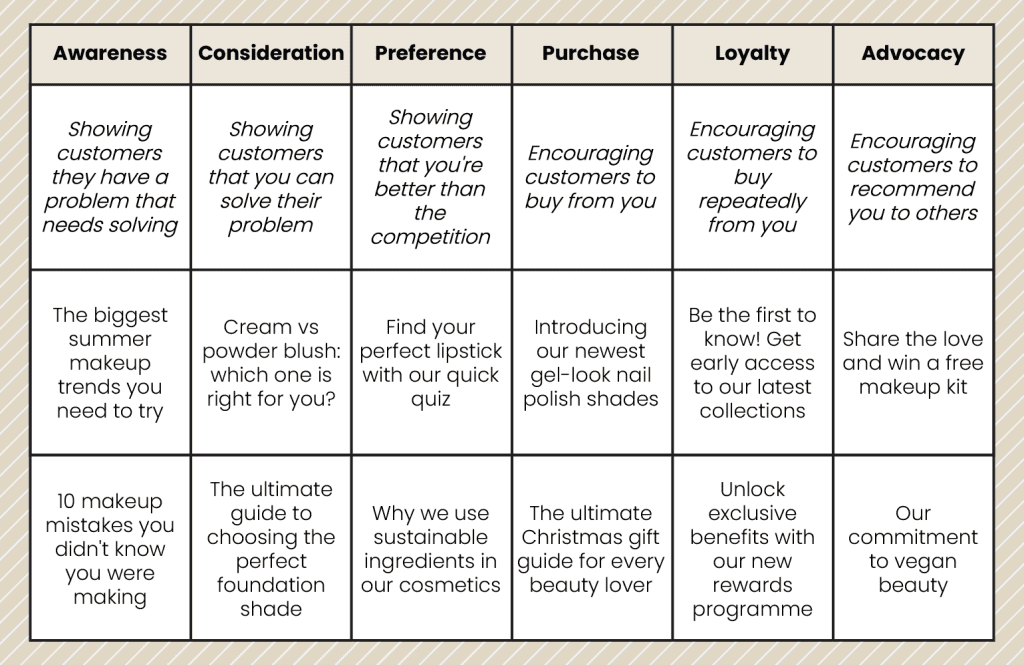
(Want to know more about keyword research? Check out our comprehensive guide!)
3. You can answer customer’s questions
Your customers will have many questions about your business and the products you sell. You can use your blog to answer these queries, establishing yourself as a trusted source of information.
Not only this, but by proactively answering questions, customers are less likely to email and call you for support, saving your internal resources.
You can identify what to write about by looking at your customer reviews, emails, and live chat logs. Social listening, where you listen to conversations on social media, is a great way to learn more about what your customers want to see.
The Gymshark blog answers customer’s questions and keeps them informed. The blog explains the latest fitness and style trends and even offers FAQs about its frequent sales events.
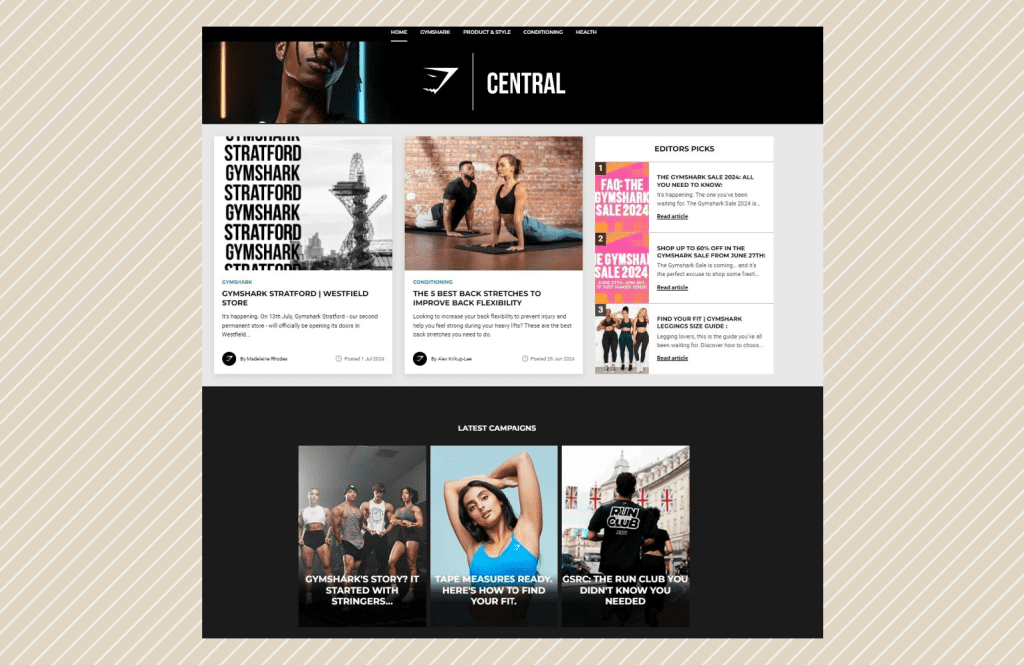
4. You can show off your expertise
The search engines want to promote the most trustworthy, accurate content to users. Blogging offers a fantastic opportunity to showcase your expertise around a particular topic.
The best way to optimise your content is to use Google’s E-E-A-T (expertise, experience, authorativeness, and trust) framework. Some ways you can show that your blog articles are credible and reliable include:
- Citing credible sources of information
- Interviewing experts
- Showcasing the experience and qualifications of your blog authors
- Linking to relevant websites and studies
CBD oil counts as a ‘your money or your life’ topic in Google – which means it’s even more important to provide accurate, fact-checked, relevant content. Supreme CBD does this well by creating well-researched, detailed articles with links to medical journals and academic papers.
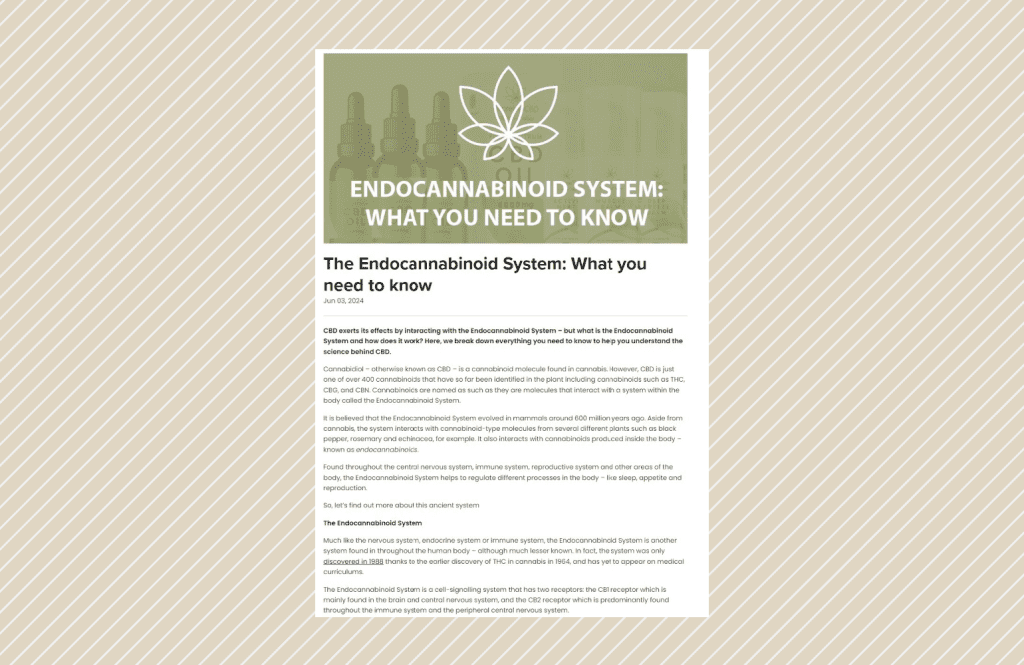
5. You can generate backlinks
Backlinks act as a vote of confidence in your website. The more relevant backlinks you receive, the more the search engines see your site as an authoritative source of information – giving you an SEO boost.
One of the most effective ways of getting backlinks is to create good content that other websites want to link to. Your blog is a great opportunity to create educational, informative, entertaining content that drives links.
According to Backlinko, only 6% of blog articles have external links pointing back to them. So if you can get at least one backlink for each of your articles, you’re in an enviable position!
Remember that quality is better than quantity when it comes to backlinks for your blog. Irrelevant, spammy backlinks can negatively affect your SEO.
Don’t forget that you can encourage people to share your blog posts on social media too. While sharing articles on social media doesn’t directly impact your search engine rankings in the same way as backlinks, it does increase the visibility of your articles online.
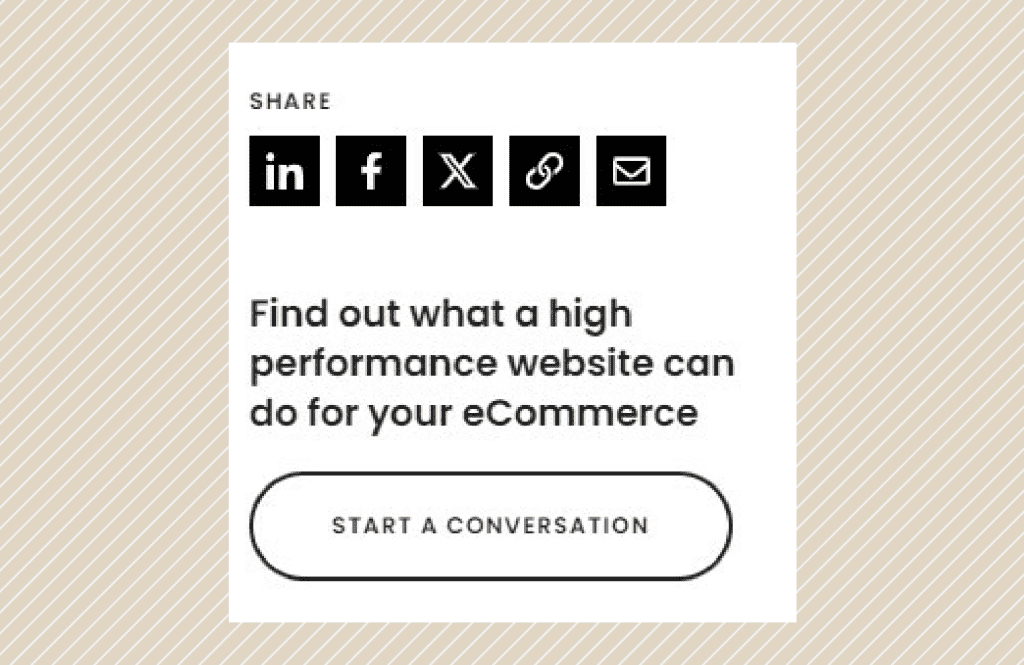
6. You can sell your products
One of the main ways that eCommerce stores use blogs is to promote products. You can create an article that identifies an issue a customer has and suggest a product (or a range of products) that solves the problem.
This is great for appealing to:
- People in the middle of the search funnel that are conducting research into which product to buy
- People at the bottom of the search funnel who are ready to buy right now
Here’s a great example of a blog article from Adidas. The article is about the best shoes for doctors to wear while on duty – something there’s not much information about online.
The article links to relevant trainers on the Adidas website. There’s also a discount for essential workers to sweeten the deal and encourage sales.
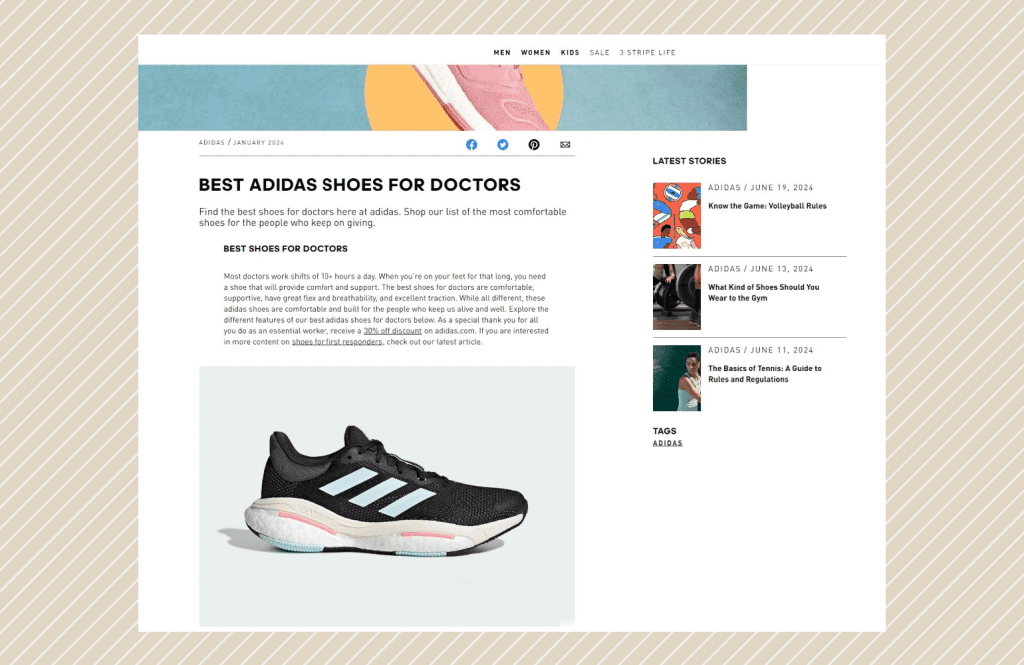
7. You can keep visitors on your site for longer
The longer prospective customers stay on your website, the more benefits for your business. Not only are visitors more likely to convert, but they’re more likely to read about your brand and become more aware of your values.
One of the ways you can keep visitors on your site through your blog is with internal linking. By linking to other articles and product pages (more on that later), you can help people explore your eCommerce site.
We like how Sunday Riley has links to related articles at the bottom of each article, encouraging readers to find out more and stay on the blog.

Another way to keep people on your website is with a regular posting cadence. By maintaining a consistent posting schedule, visitors are more likely to come back to check out new content. A content calendar is essential for staying organised and ensuring new articles roll out on time.
8. You can tell customers more about you
People are more likely to buy from brands that share their values. According to the World Economic Forum, 70% of people worldwide say they shop with businesses that reflect their principles, with this percentage going up to 90% in some countries.
Your blog is a brilliant way to showcase your personality and reiterate your values. Let’s go back to the vegan cosmetics company we mentioned earlier in the article. If the company wanted to show its commitment to plant-based living it could:
- Educate visitors about the benefits of vegan cosmetics
- Talk about specific vegan ingredients and their benefits
- Show visitors how to make vegan beauty products at home
- Promote the benefits of a vegan lifestyle
- Advocate for legislation that promotes animal welfare
Sustainability is a massive part of Allbird’s ethos, and its blog focuses on not only its eco-friendly shoes but also its green credentials as a business. Its blog reiterates Allbird’s values and gives prospective customers a reason to shop with the brand.
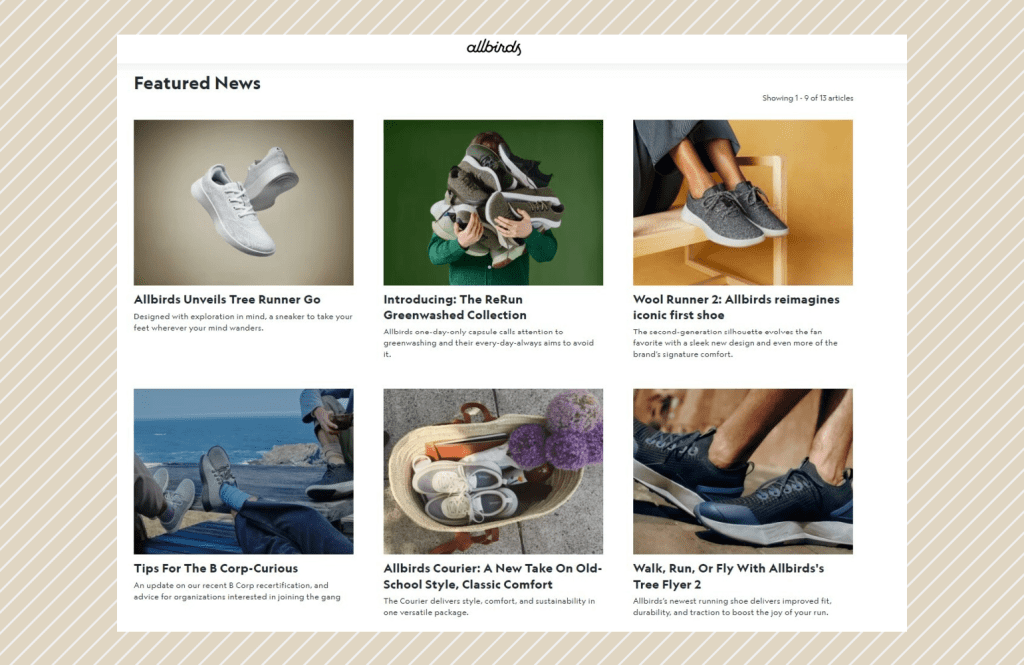
9. You can drive conversions
As well as selling your products on your eCommerce blog, you can also use your articles to increase website conversions.
For example, if you want to encourage visitors to sign up for your email marketing list, follow you on social media, or check out your reviews, testimonials, and case studies.

You can use pop-ups, call-to-actions, banner ads, and hero images at the top of your article to do this. However, make sure these elements don’t detract from the user experience of your blog, especially on mobile.
You want to encourage people to stay on your website, not drive them away!
Need a little extra help with your blogging?
Running and maintaining a blog for your business can be challenging. Put the effort in though, and you’ll reap the rewards.
If you want to start blogging but don’t know where to begin, we can help.
Our digital marketing experts can identify the perfect keywords to use, create stunning images and videos that stop the scroll, and create content that your prospective customers will love.
Want a taster of what we can do for you? Check out our own blog!
Get in touch today to see how we can transform your eCommerce store into a revenue-generating machine.


 Back
Back
